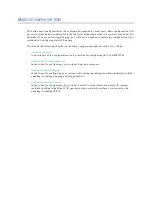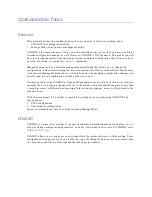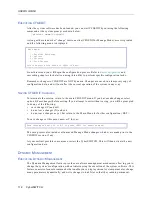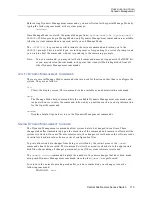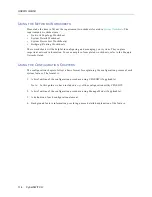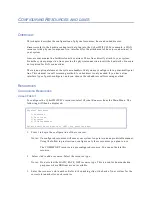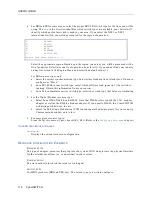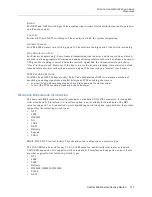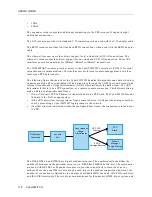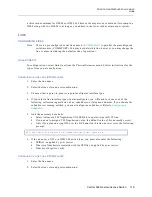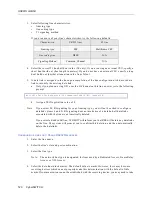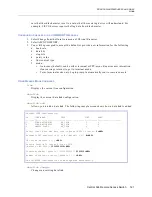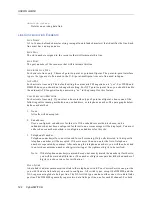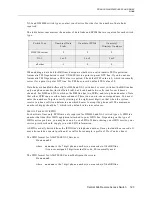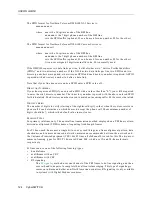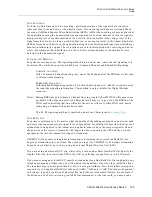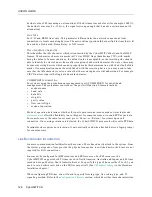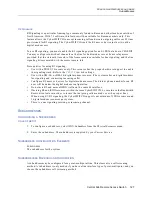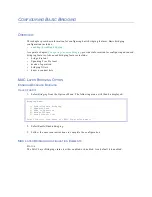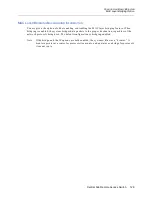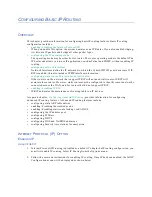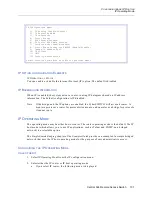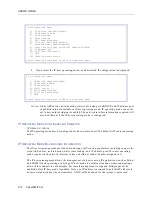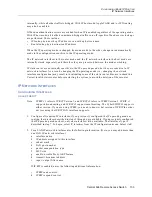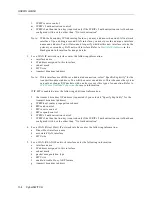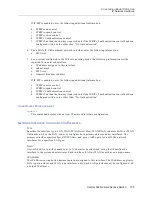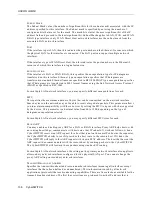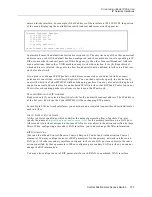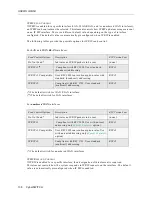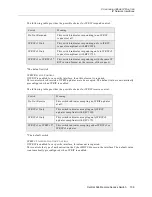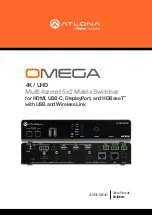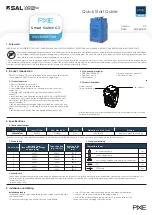
USER’S GUIDE
124 CyberSWITCH
The SPID format for Northern Telecom DMS-100 NI-1 Service is:
aaannnnnnnss
where aaa is the 3 digit area code of the BRI line
nnnnnnn is the 7 digit phone number of the BRI line
ss is the SPID suffix (optional, 01 can be used for one number, 02 for the other)
The SPID format for Northern Telecom DMS-100 Custom Service is:
aaannnnnnnsstt
where aaa is the 3 digit area code of the BRI line
nnnnnnn is the 7 digit phone number of the BRI line
ss is the SPID suffix (optional, 01 can be used for one number, 02 for the other)
tt is a user assigned 2 digit terminal Id code, 00 is normally used
If the DMS100 requires two data links per line, it will also have two “Service Profile Identifiers
(SPIDs)” and two directory numbers. If the NI-1 has two data links per line, two SPIDs and two
directory numbers are required, otherwise one SPID and one directory number is required. A SPID
is paired with a directory number to define a data link.
Note that if your line does not require a SPID, enter a SPID value of 0.
D
IRECTORY
N
UMBERS
If your line requires a SPID (if you entered a SPID with a value other than “0”), you will be required
to enter the site's directory number. That directory number is paired with the above entered SPID
for this data link. The directory number is used to match an incoming call with the correct data link.
D
IGITS
V
ERIFIED
The number of digits to verify (starting at the rightmost digit), so that when the system receives a
phone call it can determine on which bearer to accept the phone call. The maximum number of
digits should be 7, which is the default value in most cases.
F
RAMING
T
YPES
For primary rate lines only. The normal line transmission method employed on a PRI line is a time-
division multiplexed (TDM) scheme of repeating fixed-length frames.
For T1 lines, each frame uses a single bit to convey such things as a frame alignment pattern, data
checksums, and in more advanced networks, maintenance commands between the network and
the Customer Premise Equipment (CPE). For E1 lines, all of channel 0 is used for this. The two most
common framing types for PRI/T1 lines are SF and ESF, which are 12- and 24-frame formats,
respectively.
E1 lines can use one of the following framing types:
•
doubleframe
•
multiframe with no CRC
•
multiframe with CRC
•
R2 signaling
The
R2 signaling
method uses one channel of the PRI frame to do line signaling, and then
uses in-band tone pairs to complete the call control messaging. This type of signaling is
common in Korea and other non-North American countries. R2 signaling is only available
in systems with Digital Modem resources.

